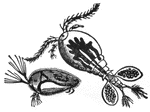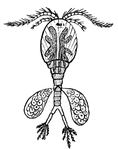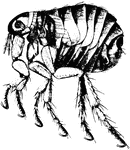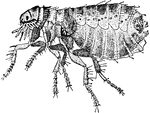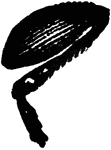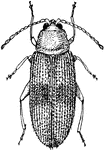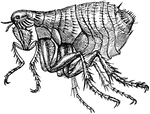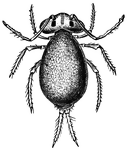Search for "flea"

Flea
the flea has a curios apparatus for sucking blood, which is very beautiful as examined with a microscope…

Flea
Fleas are parasites. That is any plant or animal which feeds upon another living plant or animal without…

Flea
Fleas are parasites. That is any plant or animal which feeds upon another living plant or animal without…

Water Flea
The Copepoda are represented by the cyclops, or water flea. This form is common in sluggish streams…

Flea
"Aphaniptera includes the fleas, which, despite their minuteness, have made themselves a name in the…
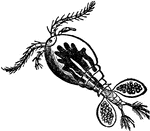
Cyclops communis Water Flea
"Water Flea is a popular name for minute aquatic Crustaceans such as daphnia, cypris, and cyclops. In…
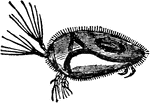
Cypris Unifasciata Water Flea
"Water Flea is a popular name for minute aquatic Crustaceans such as daphnia, cypris, and cyclops. In…

Daphnia Pulex Water Flea
"Water Flea is a popular name for minute aquatic Crustaceans such as daphnia, cypris, and cyclops. The…

Daphnia
"The water fleas just visible to the naked eye are present in nearly all waters and become very abundant…

Black Bug
Distinct by their usually small size, their intense black colors, which occasionally have a bluish greenish…
Common Fleabane
Of the Composite family (Compositae), the common fleabane (Erigeron philadelphicus).

Flea (Pulex Irritans)
"The common Flea has an oval body, somewhat flattened, and covered with a rather horay skin."

Human Flea
The human flea (Pulex irritans) is a parasitic insect that actually has several hosts despite its name.
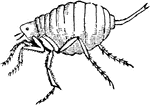
Chigoe Flea (Male)
The chigoe flea (Tunga penetrans) is a parasitic arthropod found in tropical climates, especially South…
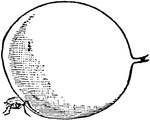
Chigoe Flea (Female)
The chigoe flea (Tunga penetrans) is a parasitic arthropod found in tropical climates, especially South…

Flea Larva
An illustration of the larva of a common flea. Flea larvae emerge from the eggs to feed on any available…

Flea Pupa
An illustration of the pupa of a common flea. After going through three larval stages they spin a silken…

Flea
An illustration of a common flea. Once the flea reaches adulthood its primary goal is to find blood…
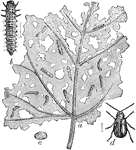
Grapevine Flea Beetle
The Grapevine Flea Beetle (Altica chalybea). "a, leaf infested with larvae; b, larva; c, cocoon; d,…

Blackberry Psyllid
The Blackberry Psyllid (Trioza tripunctata) is an insect that feeds on specific plants.
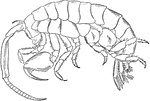
Marine Isopod
The marine isopod or sand flea (Gammarus) is in the sand, under rocks, and in the seaweed. Many are…

Marine Isopod
The marine isopod or sand flea (Caprella) is an omnivorous feeder that eats detritus, one-celled plants,…

Flea Circus
An illustration of a group of fleas doing various activities seen in a circus. Some fleas are pulling…

Flea Dance
An illustration of five fleas dancing on a platform. Two fleas are dancing together as a pair and the…

Flea Race
An illustration of four fleas competing in a hurdle-race. The flea in first place is crawling under…

Flea Tight-Rope
An illustration of a flea dressed in a uniform walking across a tight rope while holding a stick.
